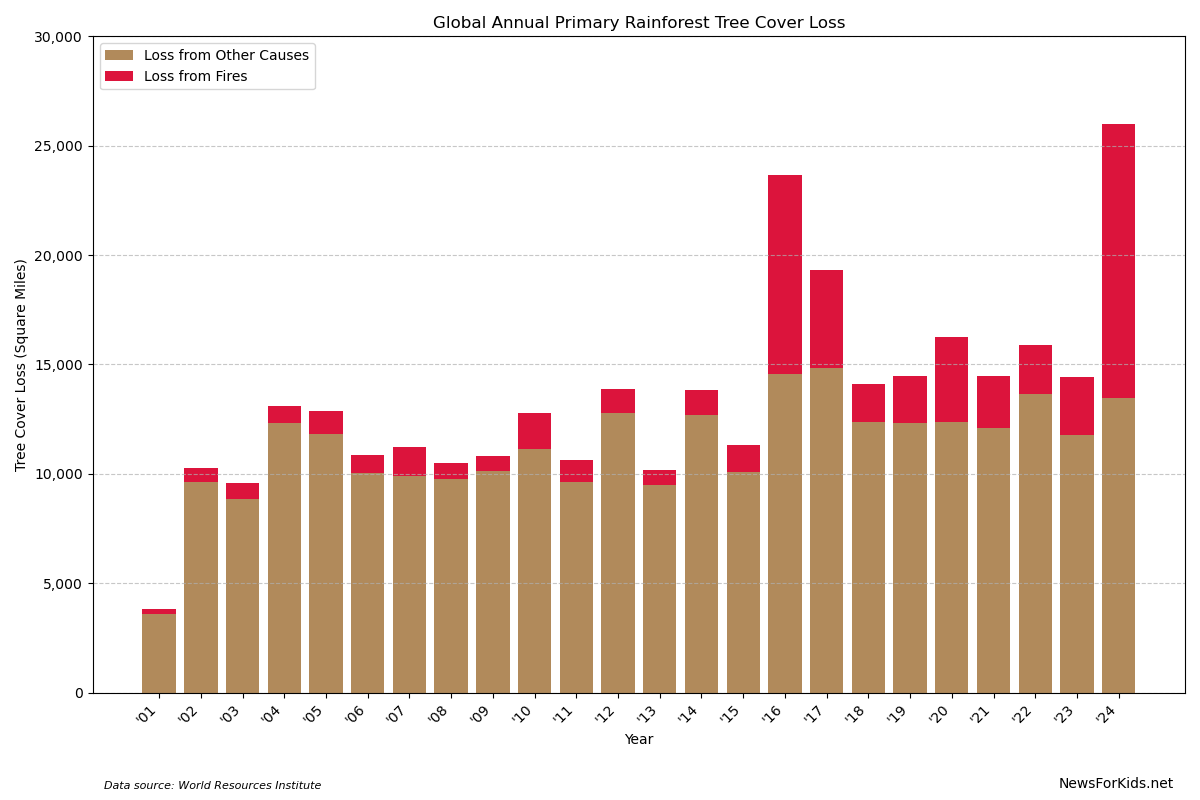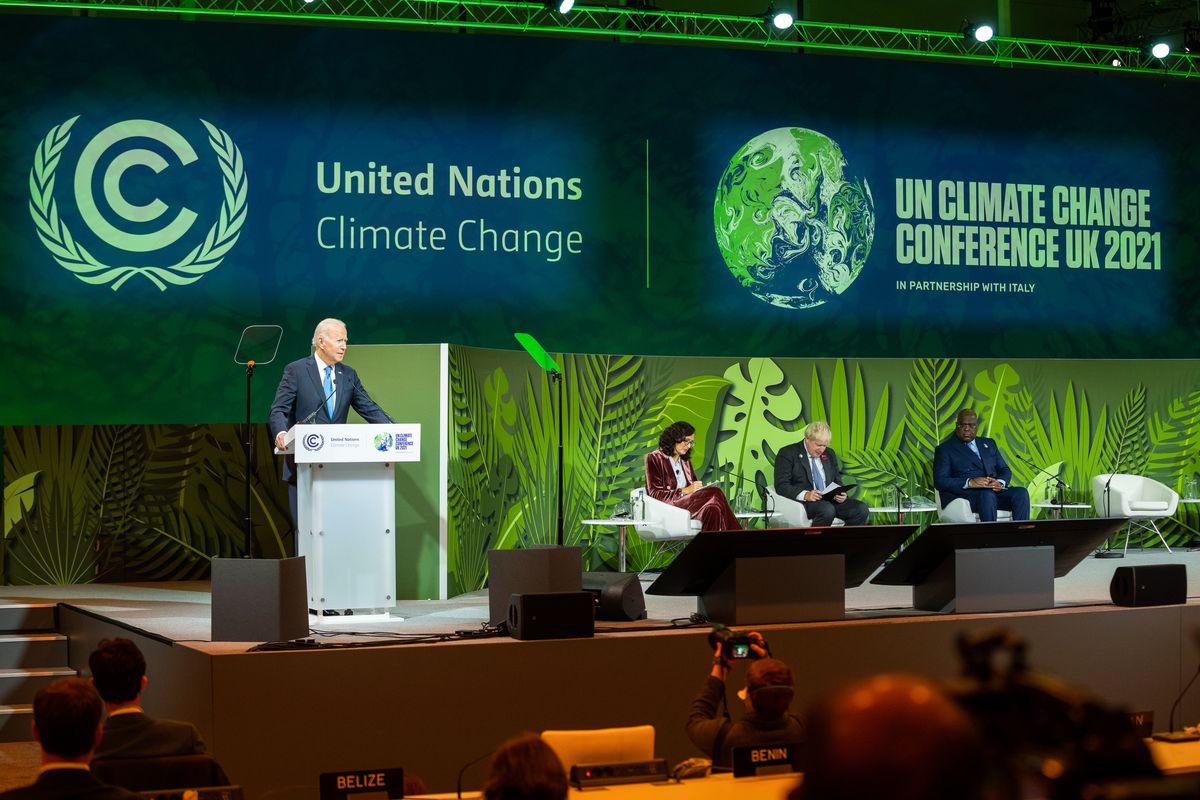Last year, the world lost more forests than ever before. The biggest cause of this loss was fires. Land clearing for farming and other human activities was also a major cause. The results are very worrying for the planet, which relies on forests to help fight climate change.
Last week, researchers from the University of Maryland and the World Resources Institute (WRI) released their latest report on the world’s forests. The report shows that the world lost about 25,870 square miles (67,000 square kilometers) of primary rainforest last year. That’s almost double the amount that was lost in 2023.

(Source: NewsForKids.net [CC BY-SA 4.0] based on data from WRI.)
Primary Forests and Rain Forests
Rainforests are warm, wet forests found mainly near the equator. “Primary forests” are very old forests that have never been changed by humans. Primary rainforests are important for many reasons. They’re home to many different kinds of plants and animals, and they help control floods and droughts.
Perhaps most importantly, forests help in the fight against global warming. They take in carbon dioxide, the main greenhouse gas responsible for heating the planet. Scientists say that forests around the world absorb over 25% of the pollution humans create each year. Tropical rainforests are especially important in this work. They’re so important, they’re often called the “lungs of the planet”.
It wasn’t just rainforests that disappeared more rapidly last year. Thanks to strong wildfire seasons in Canada and Russia, the world’s total tree cover loss increased by 5% last year over 2023. In all, the world lost 115,830 square miles (300,000 square kilometers) of forests last year. That’s an area roughly the size of Italy.
😕
This image has not been loaded because of your cookie choices. To view the content, you can accept 'Non-necessary' cookies.
Because of strong wildfire seasons in Canada and Russia, the world’s total tree cover loss increased by 5% last year over 2023. In all, the world lost 115,830 square miles (300,000 square kilometers) of forests last year. That’s an area roughly the size of Italy. Above, wildfires in Western Canada last May.
Last year, for the first time ever, fires were the biggest cause of forest loss. Fires caused almost half of the total loss. That’s a huge problem, because forest fires add to the pollution that causes global warming. Airplane travel is one of the world’s biggest sources of greenhouse gases. But last year, the amount of pollution released by forest fires was over four times greater than the pollution from all the world’s airplane travel in 2023.
The second biggest cause of forest loss was clearing land for farming, including growing crops and raising animals. The amount of land cleared for farming shot up by 14% last year. That’s the biggest increase in 10 years.
WRI’s report says that the world is losing forests at a rate of about 18 soccer fields every minute.

(Source: The White House, via Twitter.)
In 2021, the leaders of 140 countries signed an agreement to stop forest loss and begin increasing forest area by 2030. Sadly, that’s not happening. WRI says that 17 of the 20 countries with the most primary forests are losing more forests now than when they signed the agreement.
Brazil has the most tropical rainforest in the world. But last year, it also had the most forest loss. It was responsible for 42% of the world’s total loss of primary forest. Brazil has been suffering from its worst drought ever. These dry conditions meant that fires caused 66% of its forest loss.
😕
This image has not been loaded because of your cookie choices. To view the content, you can accept 'Non-necessary' cookies.
Brazil has the most tropical rainforest in the world. But last year, it also had the most forest loss – 42% of the world’s total loss of primary forest. Brazil has been suffering from its worst drought ever. These dry conditions meant that fires caused 66% of its forest loss. Above, an illegal fire in Northern Brazil last September.
Nearby Bolivia lost 2.5 times as much forest in 2024 as it did the year before. One major cause was fires that were started to clear land for farming, but then grew out of control.
Not all the news is bad. The report points out that Indonesia lost 11% less primary forest than it had in 2023, partly because of government efforts to prevent fires. In Malaysia, the loss of forest dropped by 13%.
WRI says that in order to meet the goal of ending forest loss by 2030, the world will need to lower its forests losses by 20% every year. Rod Taylor, who works for WRI, says, “If governments, businesses, and individuals act now, we can stop the assault on forests.”
